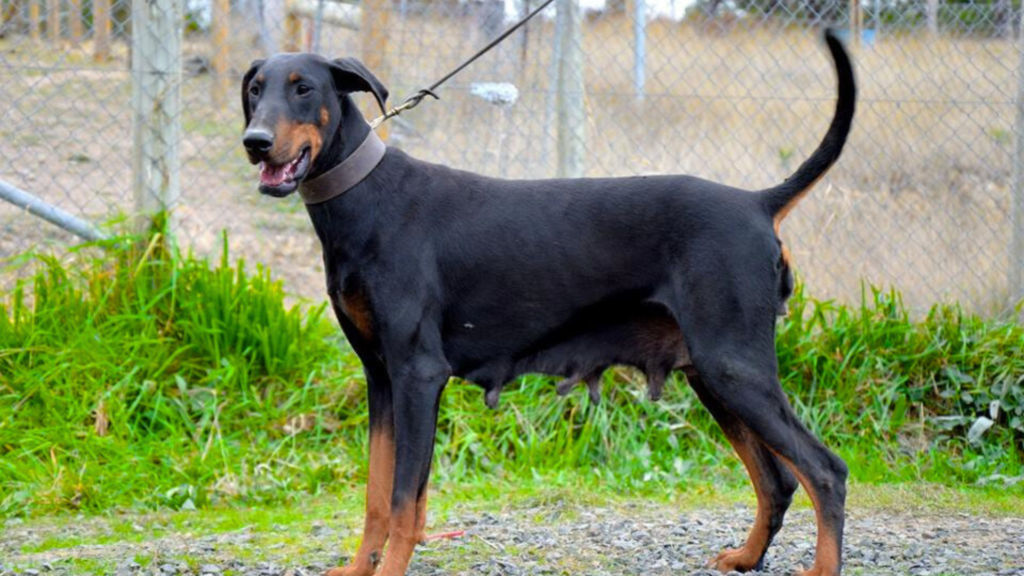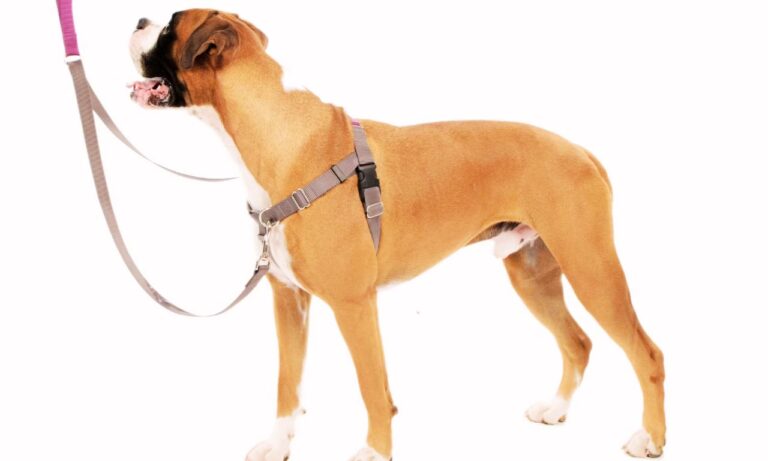The Doberman Pinscher, a breed recognized for its sleek build, loyalty, and intelligence, is a dog that tends to attract attention wherever it goes. Whether in the home or working alongside law enforcement or military, this breed commands respect.
However, one critical aspect of owning a Doberman that prospective owners often consider is the doberman lifespan female. Specifically, when it comes to the female Doberman, their life expectancy is an important factor to consider. Explore the best dog collars for French Bulldogs to keep them comfortable while ensuring durability and style.
This article explores the average lifespan of a female Doberman, how various factors affect this lifespan, and how you can ensure your dog leads a long, healthy life. With a lifespan range of 10 to 12 years, understanding what influences this can help you provide the best care possible for your loyal companion.
Blog Highlights
ToggleAverage Doberman Lifespan Female
On average, a female Doberman can live between 10 to 12 years. Compared to other large dog breeds, this is considered a relatively healthy lifespan. While smaller breeds tend to live longer, large dogs like the Doberman generally have a shorter life expectancy.

To put it in perspective, small dogs can live up to 15 to 17 years, while large breeds like the Great Dane only live between 7 to 10 years on average.
The reason female Dobermans often live a bit longer than their male counterparts is due to several factors. Statistically, male Dobermans tend to have a slightly shorter lifespan of 9 to 10 years, whereas females may experience a slightly extended lifespan by about 1 to 2 years.
In fact, a study published in 2020 revealed that female dogs across many breeds tend to live 20% longer than males. Genetics, hormonal differences, and their generally lower risk of certain health conditions contribute to this extended lifespan.
Some female Dobermans have been known to exceed this average and live to 13, 14, or even 15 years. These cases are rarer, but they serve as a reminder that with proper care, some dogs can indeed surpass their expected life expectancy. Find the best dog collars for Dachshunds that accommodate their long bodies and prevent strain on their necks.
Genetic Factors Affecting a Female Doberman’s Lifespan
Genetics plays a major role in determining the lifespan of a female Doberman. A dog’s genetic background is one of the most significant factors influencing both its health and longevity.

Research has shown that Dobermans from high-quality breeding lines tend to have better lifespans. In fact, Dobermans from reputable breeders who test for hereditary conditions are 40% less likely to suffer from major health problems that could reduce their lifespan.
Certain genetic conditions are common in Dobermans and can significantly impact their longevity. For example, Dilated Cardiomyopathy (DCM), a heart condition, is one of the most significant genetic health issues that can affect the breed.
Studies suggest that 40% to 60% of Dobermans may develop DCM by the time they are 7 years old, with females being particularly vulnerable. The average age of onset for this condition is 5 to 7 years, and without proper management, DCM can lead to early heart failure and shorten the dog’s lifespan by several years.
Another genetic condition that can impact a female Doberman’s lifespan is hip dysplasia, a condition where the hip joints develop abnormally, leading to pain and arthritis. 25% to 30% of Dobermans are affected by hip dysplasia.
While the condition itself may not necessarily reduce lifespan, it can lead to chronic pain and a reduced quality of life, which could indirectly affect the dog’s overall well-being.
For a female Doberman to have the best chance at living a long life, choosing a reputable breeder who conducts genetic testing for common health issues such as DCM, hip dysplasia, and Von Willebrand’s Disease (a bleeding disorder) is crucial. Dogs that undergo genetic screening are 50% less likely to develop these hereditary conditions.
Get insights into what is best for Dachshunds: a collar or harness for their safety, comfort, and health during walks.
Health Issues That Can Impact the Lifespan of a Female Doberman
Health issues are another key factor that influences the lifespan of a female Doberman. Like any breed, Dobermans are susceptible to a range of health problems, some of which are life-threatening. The most common health concerns in Dobermans include:
- Dilated Cardiomyopathy (DCM): As mentioned earlier, this heart condition affects around 40% to 60% of Dobermans, and it is one of the leading causes of death in the breed. Early detection and medication can help manage the condition, allowing dogs to live several years with it. Without treatment, however, DCM can significantly reduce a Doberman’s lifespan.
- Von Willebrand’s Disease: This genetic bleeding disorder prevents the blood from clotting properly, making even minor injuries potentially dangerous. It affects approximately 10% to 15% of Dobermans. Fortunately, DNA tests are available to screen for this condition, and early detection can help you manage it with appropriate precautions.
- Hypothyroidism: This condition occurs when the thyroid gland fails to produce enough hormones, leading to symptoms such as weight gain, lethargy, and skin problems. 10% to 15% of Dobermans suffer from hypothyroidism, especially as they age. Treatment with thyroid hormone replacement can help control the condition, but if left unchecked, it may lead to obesity and other complications, potentially affecting the dog’s lifespan.
- Cancer: Dobermans, like many large dog breeds, are at an increased risk for various types of cancer, especially in their senior years. Conditions such as lymphoma, mast cell tumors, and bone cancer are common in Dobermans. Approximately 20% to 25% of Dobermans over the age of 7 will develop some form of cancer. Early detection can improve treatment outcomes, so regular checkups and keeping an eye out for unusual lumps or behavior is vital.
- Bloat (Gastric Dilatation-Volvulus): Bloat is a life-threatening condition where the stomach expands with gas and twists, cutting off blood flow to vital organs. Dobermans, due to their deep chest, are at a higher risk for this condition. It is estimated that 10% to 20% of Dobermans are at risk for bloat, and it typically occurs in older dogs. This condition requires immediate veterinary attention to prevent death.

By keeping these potential health issues in mind, proactive steps such as genetic screening, regular vet visits, and early intervention can help increase the chances of your Doberman living a longer life.
To discover what activities bring joy to Australian Cattle Dogs, check out this detailed guide on What Do Australian Cattle Dogs Love.
Exercise and Diet: Key Factors for a Healthy Lifespan
Exercise and diet are two of the most influential factors in ensuring a long and healthy lifespan for a female Doberman. The breed is naturally athletic, and maintaining an active lifestyle is essential for keeping your dog healthy.

On average, a Doberman should get about 60 to 90 minutes of physical activity each day. This could be a combination of walks, runs, and playtime. Engaging in these activities regularly can reduce the risk of obesity, cardiovascular problems, and joint issues.
Exercise also helps with mental stimulation, as Dobermans are intelligent dogs that need to stay mentally sharp. Incorporating obedience training or puzzle toys can be helpful for their mental well-being. A lack of mental stimulation can lead to boredom and behavioral problems, which could ultimately reduce a dog’s quality of life.
In terms of diet, female Dobermans need a high-quality, well-balanced diet that meets their nutritional requirements. A female Doberman should typically consume between 2 to 4 cups of food per day, depending on her age, activity level, and metabolism.
High-protein foods that support muscle mass and healthy fats that provide energy are essential. For example, a 60-pound Doberman may need around 1,500 to 2,000 calories per day.
Avoiding overfeeding is critical for weight management. Obesity can lead to many health problems, including heart disease, diabetes, and joint issues. Dobermans, especially as they age, are more likely to gain weight, so portion control is necessary.
Feeding your Doberman the right amount based on her age and activity level can help keep her healthy and reduce the risk of life-threatening diseases.
To find the ideal collar size for your Australian Cattle Dog, check out this guide on What Size Collar for Australian Cattle Dog for helpful tips on measurement and fit recommendations.
Veterinary Care: Prolonging Your Doberman’s Life
Routine veterinary care is essential for keeping your female Doberman healthy throughout her life. Annual check-ups are important to monitor her overall health and ensure she remains up-to-date on vaccinations, flea, tick, and worm prevention, and dental care.

During these visits, your vet will conduct routine screenings to detect early signs of conditions like DCM, hypothyroidism, and even cancer. The earlier you catch a health issue, the better the chances of successfully managing it and extending your dog’s life.
Senior Dobermans (those over the age of 7 years) should have bi-annual check-ups. At this age, the risks for conditions like arthritis, vision or hearing loss, and cognitive decline increase, so regular veterinary visits are necessary to monitor any changes.
Conclusion: Ensuring a Long Life for Your Female Doberman
On average, doberman lifespan female live between 10 to 12 years, but with proper care, they can live even longer. By providing a balanced diet, regular exercise, routine veterinary visits, and maintaining a healthy weight, you can help ensure that your female Doberman enjoys a long and healthy life.
Genetics, health conditions, and early intervention all play crucial roles in determining how long your dog will live.
With the right care, your female Doberman can be a loyal companion for many years to come, offering love, protection, and devotion throughout her life. Learn what size collar for a Rottweiler is ideal by following this detailed guide to ensure a perfect fit for your dog’s comfort and safety.





